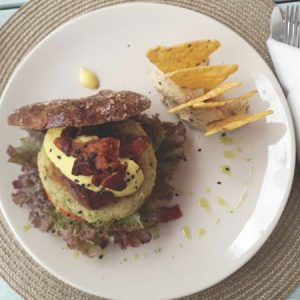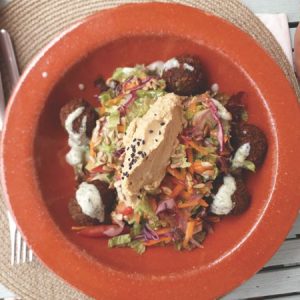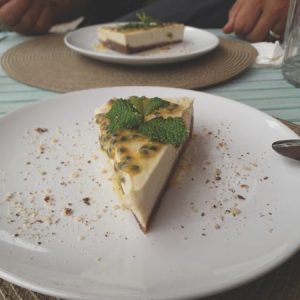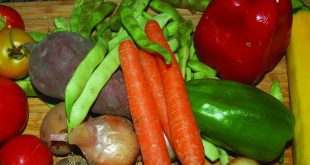Our dog is immediately given a bowl of water by Andreia Silva. We’ve come to try this vegetarian restaurant in Tavira at lunchtime. Good. I notice an Argentinian ant. It climbs up my table, walks across my plate and goes back down again. It’s not interested in the plate (from IKEA, Made in Portugal), since it’s still empty. This little ant is special. The species came into Europe via a port in southern France, then spread through Spain to Tavira, reaching as far as Silves and Monchique and from Aljezur to Cape Saint Vincent. It’s a little fighter. There are more than 160 species of ant in the Mediterranean region. And yet, thanks to some tourist guides, we know that Portugal is not near the Mediterranean. All tourists over the last 50 years (congratulations to RTA for its 50 years) have learned that this sea is the Atlantic. And it  was the Atlantic that this small species of ant, which is only about 2 millimetres long, crossed in the ship’s cargo, between palm trees and sacks of coffee, reaching land in the middle of the last century in Marseille. In the early 20th century, it appeared on the island of Madeira and later spread throughout southern Europe. Like the Zika virus, it was humans who brought it with them.
was the Atlantic that this small species of ant, which is only about 2 millimetres long, crossed in the ship’s cargo, between palm trees and sacks of coffee, reaching land in the middle of the last century in Marseille. In the early 20th century, it appeared on the island of Madeira and later spread throughout southern Europe. Like the Zika virus, it was humans who brought it with them.
As an aperitif before lunch, we drank fresh passion fruit and melon juice (3.50 euros). The Argentine ant is red. In finding food for its colony, which has to be somewhere under a rock next to one of the trees, it takes on a special role in Nature’s complex system. Since arriving in France, on its “crusade” throughout southern Europe, it’s been annihilating all native ant species. It fights in groups of ten against the black ants that are sometimes ten times larger than it, eventually devouring them. During the summer, ants collect seeds and flowers to carry to their nest. They store food for the winter. In all species, it’s the females who work exclusively for the good of the colony. Meanwhile our table is ready. We have a “couvert” consisting of humus, carrot marinade, olives (6.90) and brown bread (1.50). It has a seductive aroma. The ant immediately changes direction and encounters the bread. This mild climate is favourable for its reproduction. With each passing year it has more territory. To do this, it has to create new nests, find new sources of food and annihilate more competitors.
One of the starters, courgette soup (3.90), didn’t claim to contain celery. I really don’t like celery at all, but I’m glad the taste didn’t stand out much. I spread some humus on the bread with the knife (IKEA, Made in Vietnam). Delicious. The ant likes it too. She takes a crumb and sets off for the nest, proud of what she’s achieved. It’s a species that, unlike other endemic species, is not very fussy about the nest. This is what I  discover later in a book. Now we have to hurry up – they’re going to serve the main course, and we want to have eaten everything before the red ant brigades come. We don’t intend to share with them. In this world of smells they communicate with chemical signals. I decide to try falafels with humus accompanied by a salad. My colleague chooses a quinoa burger with caramelised onion in rye bread with cheddar cheese and vegan bacon (12.90). Water is served in glass bottles (2.50). We discovered that the ingredients come from right next door, from Maria Flaminga’s organic farm shop. The cups are made in France and Spain, also IKEA brand. Fifteen queens live in an Argentine ant’s nest, while in the endemic species there is only one queen to be pampered. And now?
discover later in a book. Now we have to hurry up – they’re going to serve the main course, and we want to have eaten everything before the red ant brigades come. We don’t intend to share with them. In this world of smells they communicate with chemical signals. I decide to try falafels with humus accompanied by a salad. My colleague chooses a quinoa burger with caramelised onion in rye bread with cheddar cheese and vegan bacon (12.90). Water is served in glass bottles (2.50). We discovered that the ingredients come from right next door, from Maria Flaminga’s organic farm shop. The cups are made in France and Spain, also IKEA brand. Fifteen queens live in an Argentine ant’s nest, while in the endemic species there is only one queen to be pampered. And now?
 The dessert, of course. Classic cheesecake with a hint of passion fruit sauce but free from gluten, sugar and lactose (4.90). The dessert spoons are made by Ernesto Esmeyer. The number of queens is a strategy that guarantees more success compared with the Portuguese species. They all lay eggs and multiply faster. The Argentine ant attack is quick and effective. We observe how they approach to seize the remains left by our dog. They’re not big but there are lots of them. In a few minutes hundreds or even thousands of them appear, columns of them that take everything that’s not been suitably protected. We pay the bill of 57.40 euros, which we think is expensive. We ask ourselves: why are meat and fish dishes still so much cheaper (usually less than ten euros) than a good vegan meal made with produce from local agriculture?
The dessert, of course. Classic cheesecake with a hint of passion fruit sauce but free from gluten, sugar and lactose (4.90). The dessert spoons are made by Ernesto Esmeyer. The number of queens is a strategy that guarantees more success compared with the Portuguese species. They all lay eggs and multiply faster. The Argentine ant attack is quick and effective. We observe how they approach to seize the remains left by our dog. They’re not big but there are lots of them. In a few minutes hundreds or even thousands of them appear, columns of them that take everything that’s not been suitably protected. We pay the bill of 57.40 euros, which we think is expensive. We ask ourselves: why are meat and fish dishes still so much cheaper (usually less than ten euros) than a good vegan meal made with produce from local agriculture?
Av. Dr. Mateus Teixeira de Azevedo, 86
8800-379 Tavira
Tlm.: (+351) 964 348 856
Open daily from 10 am to 9 pm. Closed Tuesdays.
Punctuation 9/15 ***************
 Eco123 Revista da Economia e Ecologia
Eco123 Revista da Economia e Ecologia

